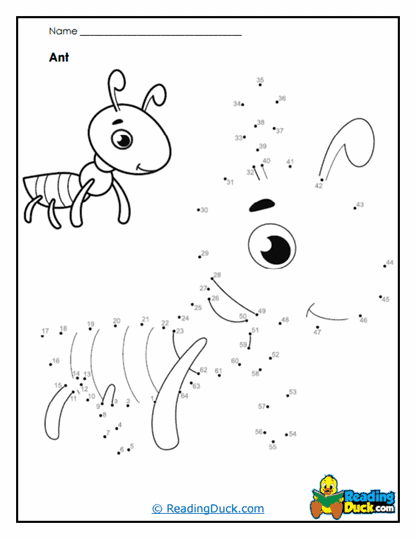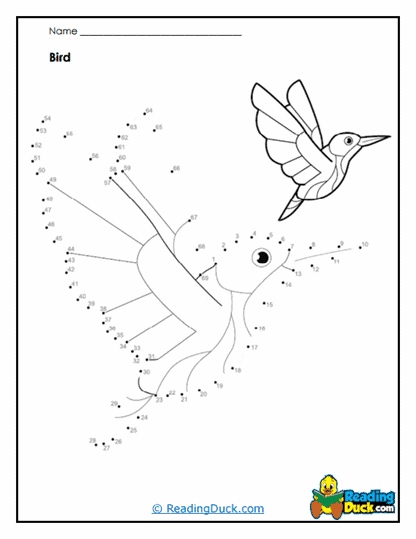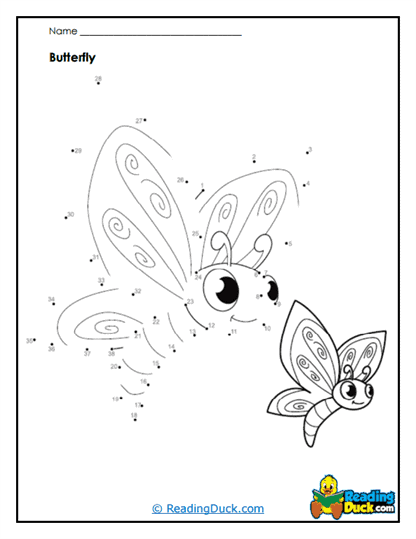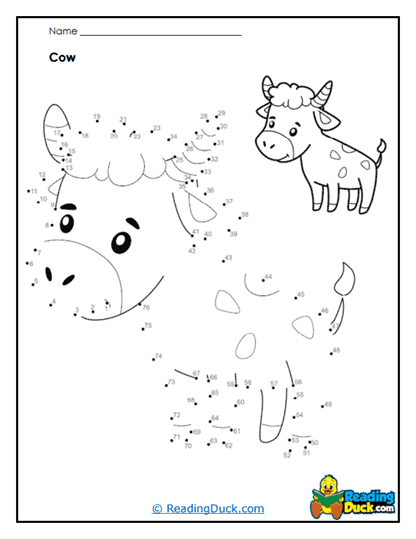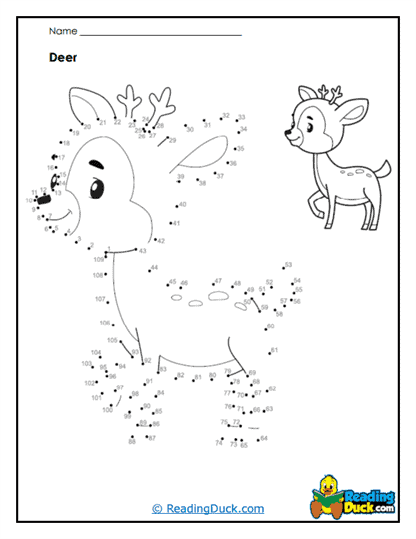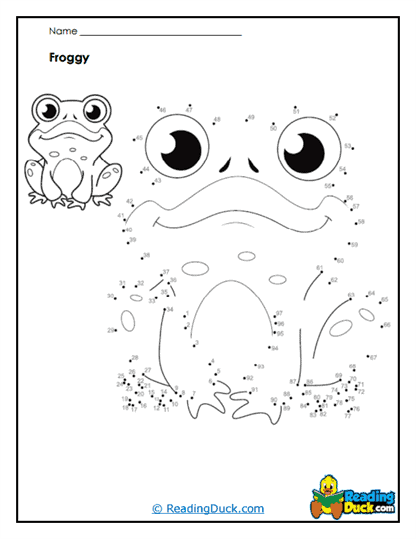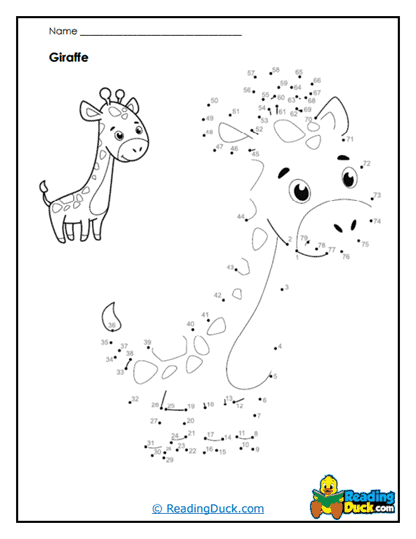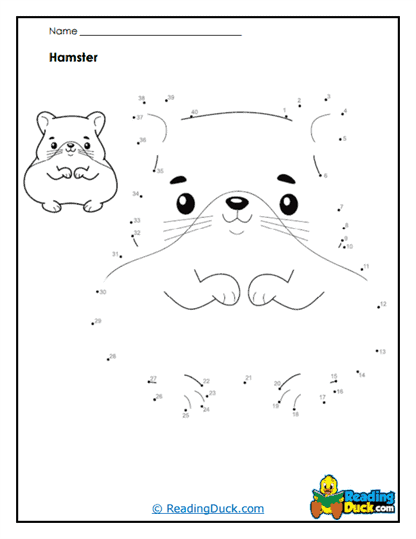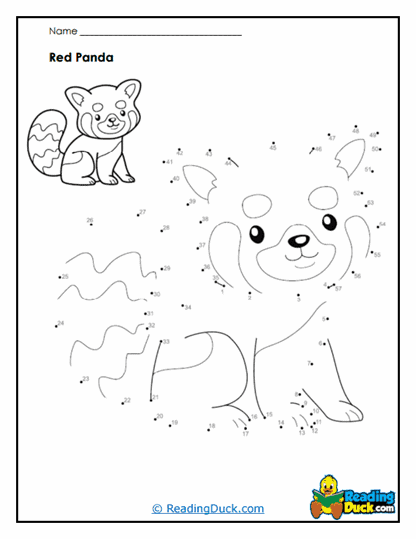Connect the Dots Worksheets
About Our Connect the Dots Worksheets
Our Connect the Dots Worksheets offer a dynamic and engaging approach to developing early handwriting skills for young learners. These worksheets are carefully designed to help students enhance their fine motor skills, hand-eye coordination, and pencil control—essential elements in the foundational stages of handwriting. By following numbered sequences and connecting dots to form images, children not only practice the mechanics of writing but also improve their ability to recognize and create patterns. This collection of worksheets, available in a convenient PDF format, allows for easy viewing, downloading, and printing. Additionally, each worksheet is accompanied by a downloadable answer key, providing guidance for educators and parents as they support their students' learning journeys.
Understanding Connect the Dots: An In-Depth Look
Connect the Dots is a classic educational activity that involves linking numbered dots in a specific sequence to reveal a hidden image. This activity is more than just a fun pastime; it is a valuable tool for developing various cognitive and motor skills in young learners.
What is Connect the Dots?
- Sequential Thinking: At its core, Connect the Dots requires children to think sequentially, following a specific order to connect each dot. This helps them understand the concept of sequencing, which is crucial in both reading and writing.
- Number Recognition: As students connect the dots, they are required to recognize and identify numbers, reinforcing their numerical knowledge and familiarity with counting.
- Visual-Spatial Skills: By connecting dots to form a complete image, children enhance their ability to perceive and understand the relationship between different points in space, contributing to their overall spatial awareness.
- Fine Motor Skills Development: Holding a pencil, drawing lines, and maintaining control over the movement of the pencil all contribute to the refinement of fine motor skills, which are essential for handwriting.
Examples of Connect the Dots Applications
- Simple Shapes: For beginners, the activity might involve connecting dots to form simple shapes such as circles, squares, or triangles. This not only introduces them to basic geometric concepts but also helps them practice drawing straight and curved lines.
- Complex Images: As children progress, they might connect dots to create more complex images, such as animals, vehicles, or scenes from nature. This challenges them to focus more on precision and accuracy, further honing their motor skills.
Enhancing Handwriting Skills through Connect the Dots
These worksheets are specifically designed to support young learners as they practice and improve their handwriting skills. Connect the Dots worksheets serve as an effective, multi-sensory learning tool that engages students while fostering critical skills needed for writing.
How It Works:
- Reinforcing Pencil Grip: As children connect the dots, they are practicing holding and maneuvering a pencil correctly, which is fundamental in developing a proper pencil grip. This is a vital aspect of handwriting that, when mastered early, sets the stage for more advanced writing tasks.
- Promoting Control and Precision: The act of tracing from one dot to another encourages students to control their pencil movements, promoting the precision necessary for forming letters and numbers correctly.
- Encouraging Consistent Practice: Regular practice with these worksheets helps solidify the connection between visual input (seeing the dots) and motor output (drawing the lines), a key component of fluent handwriting.
Supporting Cognitive Skills:
- Focus and Attention to Detail: Completing these worksheets requires focus and attention to detail, as students must carefully follow the sequence of numbers. This level of concentration is directly transferable to writing tasks, where students need to pay attention to letter formation and spacing.
- Pattern Recognition: By connecting the dots and revealing images, students begin to recognize patterns, an important skill in learning to recognize letter shapes and word formations in writing.
The Role of Connect the Dots in Early Literacy Development
Connect the Dots plays a crucial role in building early literacy skills, acting as a bridge between pre-writing activities and more complex writing tasks. These activities support the development of skills that are fundamental to reading, writing, and communication.
Building Blocks of Literacy:
- Pre-Writing Skills: Connect the Dots activities are often one of the first steps in pre-writing practice. They help children get accustomed to holding a pencil, making marks on paper, and controlling their movements—all of which are prerequisites for writing letters and words.
- Letter and Number Formation: As students connect the dots, they become familiar with the shapes and forms of letters and numbers, even if indirectly. This familiarity is crucial for when they begin to learn how to write letters and numbers independently.
- Enhancing Reading Skills: Sequential thinking and pattern recognition, both of which are developed through Connect the Dots activities, are essential for reading. Understanding the order of letters in a word, or the sequence of words in a sentence, is a skill that can be strengthened through these activities.
Communication Skills:
- Vocabulary Development: As children complete Connect the Dots worksheets and reveal images, they can be encouraged to discuss what they have drawn. This helps in expanding their vocabulary and enhancing their ability to describe and communicate ideas.
- Storytelling: Once an image is revealed, students can be prompted to create stories around it, fostering creativity and narrative skills—both important aspects of literacy.
Additional Activities to Reinforce Learning
To further solidify the skills gained from Connect the Dots worksheets, educators and parents can introduce complementary activities that reinforce handwriting and literacy development.
Suggestions for Activities:
- Tracing Letters and Numbers: After completing a Connect the Dots worksheet, students can be given tracing exercises that focus on the letters or numbers they encountered during the activity. This reinforces their familiarity with letter and number shapes.
- Drawing and Labeling: Encourage students to draw additional elements around the completed image and label them. For example, if they connect dots to form a picture of a dog, they can draw a doghouse or a tree nearby and label these objects.
- Story Creation: Use the images created in Connect the Dots worksheets as prompts for creative writing or storytelling. Ask students to write a short story about the scene they have just revealed, helping them connect writing with their own imagination.
- Fine Motor Skill Exercises: Introduce additional fine motor activities, such as cutting along lines or threading beads, to further strengthen the muscle control needed for writing.
Appropriate Grade Levels:
- Kindergarten to First Grade: These worksheets are particularly suited for students in kindergarten to first grade, as this is the period when foundational handwriting and pre-writing skills are being developed. However, they can also be used with older students who may need additional practice or support in these areas.
The Importance of Connect the Dots in Academic and Personal Growth
Connect the Dots is more than just an engaging activity; it is a valuable tool that plays a significant role in the academic and personal development of young learners. By fostering essential handwriting and literacy skills, these worksheets prepare students for future success in both their academic and personal lives.
Practical Benefits:
- Improved Handwriting: Regular practice with these worksheets leads to better handwriting, which is a critical skill not only for academic success but also for effective communication throughout life.
- Enhanced Cognitive Skills: The focus, attention, and sequential thinking required for Connect the Dots activities are skills that students will use in a wide range of academic subjects and real-life situations.
- Boosted Confidence: As students complete these worksheets and see the images they have created, they experience a sense of accomplishment, boosting their confidence and motivation to learn.
In conclusion, Connect the Dots worksheets offer a comprehensive and enjoyable way for young learners to develop handwriting skills and build a strong foundation in early literacy. By integrating these activities into their learning routines, educators and parents can support their students' journey toward becoming confident and proficient readers, writers, and communicators.
